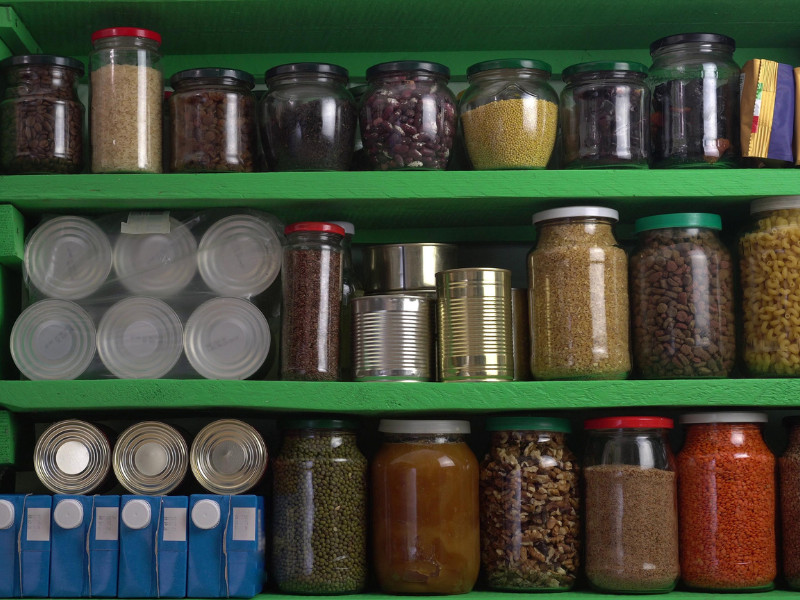Storing a food stockpile can be a challenging task, but it is essential to ensure that you and your family are prepared in the event of an emergency or disaster.
Whether you are preparing for a natural disaster or a global pandemic, having a well-stocked pantry can provide peace of mind and ensure that you have the essentials needed to survive. Here are some tips for storing a food stockpile:
- Choose a cool, dry, and dark location
One of the most important factors to consider when storing a food stockpile is the location. You should choose a location that is cool, dry, and dark, such as a basement or pantry. Avoid storing food in areas that are prone to humidity, heat, or direct sunlight, as this can cause food to spoil or become contaminated. A cool and dry location will also help to prevent pests from infiltrating your food stockpile.
- Use airtight containers
Using airtight containers is essential to keep your food stockpile fresh and safe to eat. Air and moisture are the primary causes of food spoilage, so it is essential to keep them out of your storage containers. Airtight containers help to create a barrier between your food and the environment, preventing the growth of bacteria and mold. You can use a variety of containers for storing your food, such as plastic containers, Mason jars, or mylar bags. Whatever container you choose, make sure that it is made of food-grade materials and is labeled as airtight.
- Rotate your stockpile
Rotating your stockpile is crucial to ensure that your food stays fresh and doesn’t go to waste. This means using the oldest items first and replacing them with newer items. A good rule of thumb is to rotate your stockpile every six months, although this will depend on the type of food you are storing. For example, canned goods can last up to two years or more, whereas grains and flours may only last for six months to a year.
- Label everything
Labeling your food storage containers is essential to ensure that you can easily identify what you have and when it needs to be rotated. When labeling your containers, be sure to include the contents and the date you stored them. This will help you keep track of your inventory and prevent you from accidentally using expired food.

- Consider temperature and storage requirements
Different types of food require different storage conditions, so it is essential to consider this when storing your food stockpile. For example, canned goods should be stored at room temperature and should not be exposed to extreme heat or cold. Freeze-dried foods should be stored in a cool, dry place. Grains and flours should be stored in airtight containers in a cool, dry location. When storing food, it is also essential to avoid exposing it to chemicals or strong odors, which can affect the taste and quality of the food.
- Keep an inventory
Keeping an inventory of your food stockpile is crucial to ensure that you can track what you have and what you need to replace. This will help you avoid overstocking or running out of food. You can keep an inventory using a spreadsheet or a pen and paper. Be sure to update your inventory regularly, especially after you have used or replaced items.
- Consider rotation based on shelf life
To ensure that you use your stockpile effectively, you may want to consider rotating based on the shelf life of different items. For example, you may want to use up items with a shorter shelf life, such as grains and flours, before using items with a longer shelf life, such as canned goods. This will help you avoid waste and ensure that your stockpile stays fresh.
- Categorize items in your stockpile
Group similar items together, such as canned goods, grains, and snacks. This will help you to keep track of what you have and make it easier to find what you need.
By following these tips, you can ensure that your food stockpile remains fresh and safe for consumption.
More on Stockpiling and Preparedness
How to Build a Stockpile for $10 a Week
The Best Canned Foods to Stockpile
25 Hygiene Items to Stockpile ASAP
The Best Supplements to Stockpile
Non-Food Items to Stockpile
How to Organize a Walk-in Pantry





